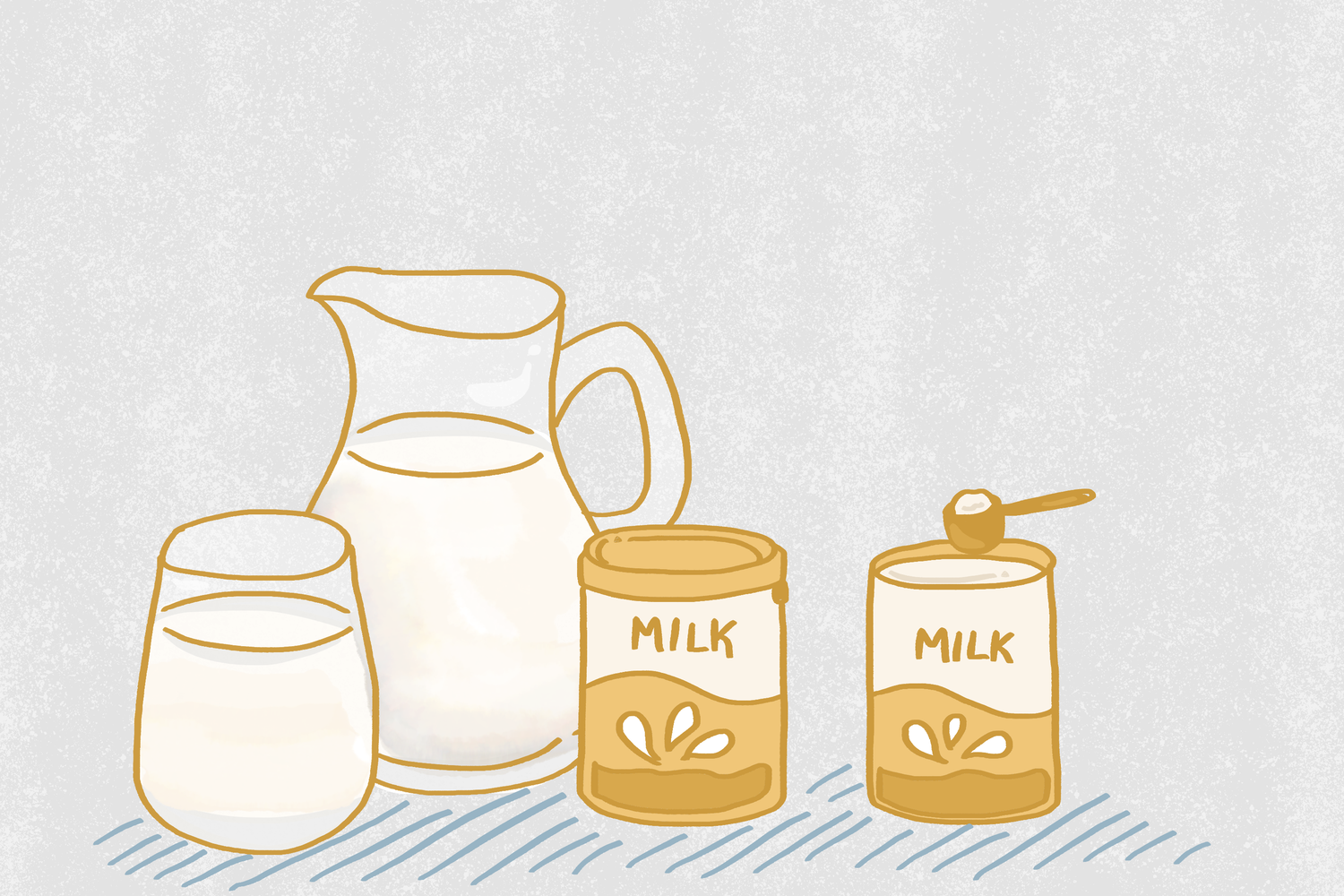Dear Dairy
For three years in middle school, I ate the same breakfast. I would settle into the dining room chair before the following spread: a warm glass of milk and two Costco taquitos. The meal was orderly, timely, and unchanging.
When I told my friends, they commented in surprise — why not the standard fare of cereal and refrigerated milk? I didn’t have much to defend. The liquid, white and thick, took on a sour tang after boiling over on the stovetop. I dreaded reaching the bit of skin that formed, a result of the milk protein’s coagulation as water evaporated.
Yet my grandmother insisted that I finish the cup every morning. The reason was twofold. Standing at under five feet, her frame has shrunk over the years due to osteoporosis — a bone disease that runs through the family. After numerous fractures and falls, she suffers from back pain and weak bones. Dairy consumption became her form of non-medical prevention.
At the same time, my family, other parents, and classmates obsessed over height. School posters and teachers frequently repeated the mantra that drinking milk would make us stronger and taller.
Even Harvard seems to share this preoccupation. Large steel containers hold 1% milk, no-fat, Lactaid, and whole milk, outnumbering water dispensers in every dining hall.
At school, students chug a glass alongside each meal. At home, my parents and grandma, who would much prefer congee and pickled vegetables to start off their morning, have also started incorporating milk, cheese, and yogurt into their diets.
This fixation is slightly bizarre.
Humans have always used foods and herbs as traditional remedies for sickness, physical injuries, and mental ailments. Yet the size and scale of milk consumption go beyond a homemade solution. People continue to incorporate milk into their diets and cuisines, even in places with historical levels of lactose intolerance.
And so, one wonders, why?
Close your eyes, and picture a glass of milk and the associations that arise. You might see a plate of cookies, a young child with a milk mustache, Santa Claus, a bowl of cereal, a red barn, and well-groomed cows. The list goes on.
No matter what, the connections to milk are immediate and compelling. None of this is by chance. A kind of magic and mystique surrounds our understanding of milk — yes, that white liquid.
Alongside grains and vegetables, there’s a whole food group that’s just made of milk products — dairy. Heck, there’s even a term to describe humans who cannot consume cow milk and a pill to solve that issue.
Our associations with this food extend past its physical or even nutritional benefits. They can morph into wild claims about milk’s ability to prevent the onset of bone disease, facilitate weight loss, or that every person should and must drink milk.
We cannot simply take these claims at face value. For one, most humans naturally cannot drink milk in adulthood. While Europeans tend to have higher levels of lactose tolerance in their adult population, most other places of the world like Asia and Africa do not.
Yet the perceived benefits of the drink result in continued consumption. India, China, Uzbekistan, Turkey, and Pakistan are countries with some of the highest levels of lactose intolerance in the world. Their cuisines also feature little to no milk in dishes, yet these countries are now in the top 20 global producers of dairy.
Large campaigns laud the drink’s health benefits and how it brings people together through routine and community. Milk products are kid-friendly, family-friendly, and also a favorite meal of famous athletes and performers.
As extensive marketing pushes these narratives, we as a culture eventually begin to internalize these messages.
Other foods also hold a similar superpower grip on us. Bananas? High in potassium. Kale? Healthy green stuff you put in smoothies. Açai? A powerful antioxidant berry. Protein powder? A surefire way to gain muscle. Oranges? High in vitamin C. These foods have become essential and important, even if we often do not understand why.
Yet further research on the claims of these benefits will show that these foods do not present a path to an immediate fix-all. Scientists have debunked myths that drinking milk prevents stress fractures or leads to weight loss, and a 2018 meta-analysis of over a dozen studies found no correlation between milk intake and hip fractures.
My grandmother — who recently suffered another injury — has made it a goal to either drink a glass of milk a day or finish a serving of yogurt to strengthen her bones. Even if I were to tell her that perhaps there is more nuance to the health benefits of dairy consumption, she would likely shrug it off.
Most people probably would. Friends would continue to fill their glasses with their milk of choice and at home, my family would continue to stock the fridge with cartons of whole milk and Lactaid.
Admittedly, there is something comforting about the classic beverage — a reassurance that one drink of magic liquid can cure health issues, a reminder of our childhoods, or a promise of growth and strength. The associations do not simply disappear with the revelation of the tactics behind our milk-driven diets.
Still, the next time I take a sip of the white stuff, I will remember that it cannot cure a broken bone or completely eliminate my genetic predisposition for hip fractures. Or, I might think of the fact that maybe, just maybe, I didn’t need to drink so much warm milk as a kid to reach my impressive height and stature.
—Magazine writer Claire Jiang can be reached at claire.jiang@thecrimson.com. Follow her on X at @_clairejiang_. Her column “Taste of the Everyday” explores the personal, cultural, and historical multitudes that food and diet can hold.



